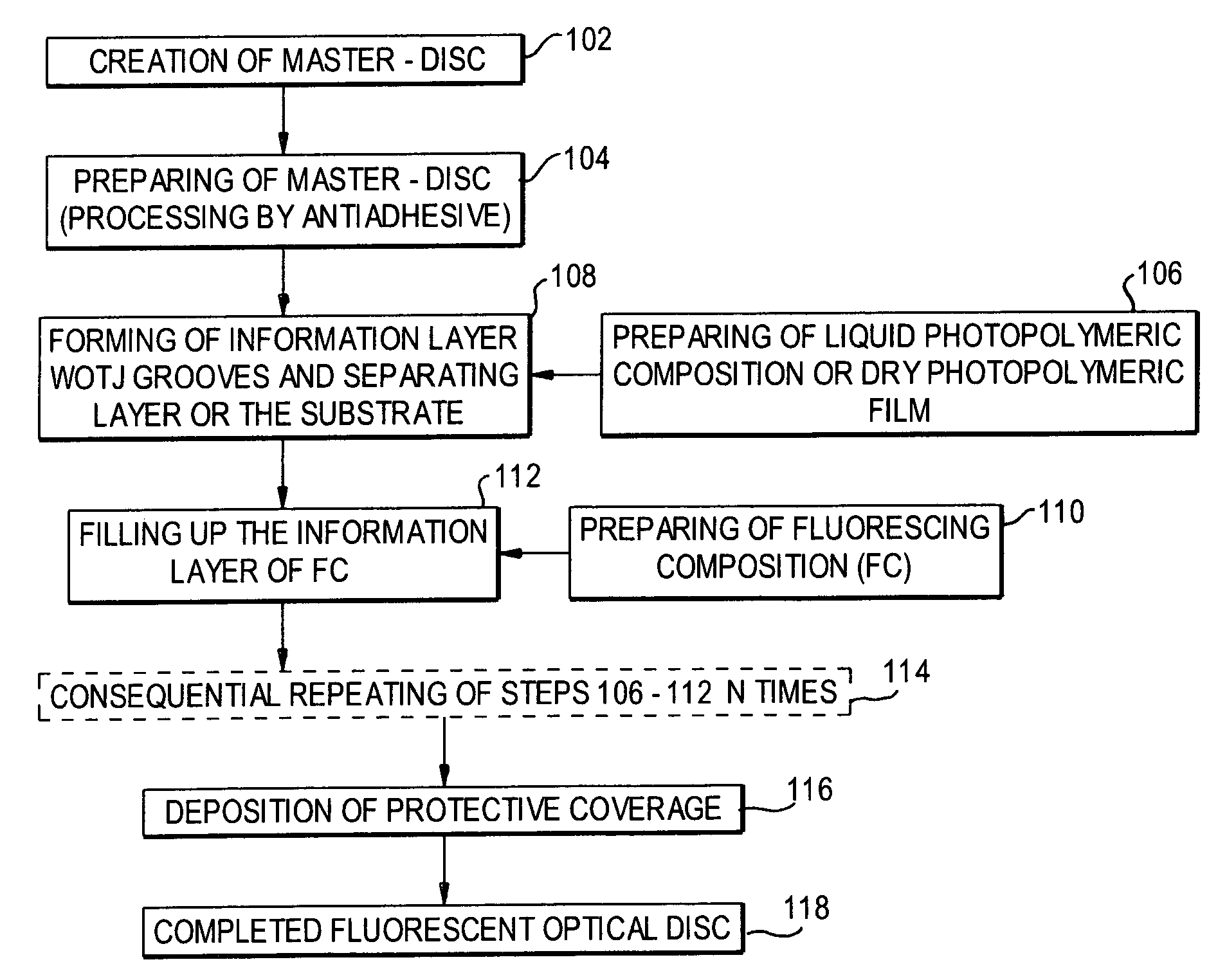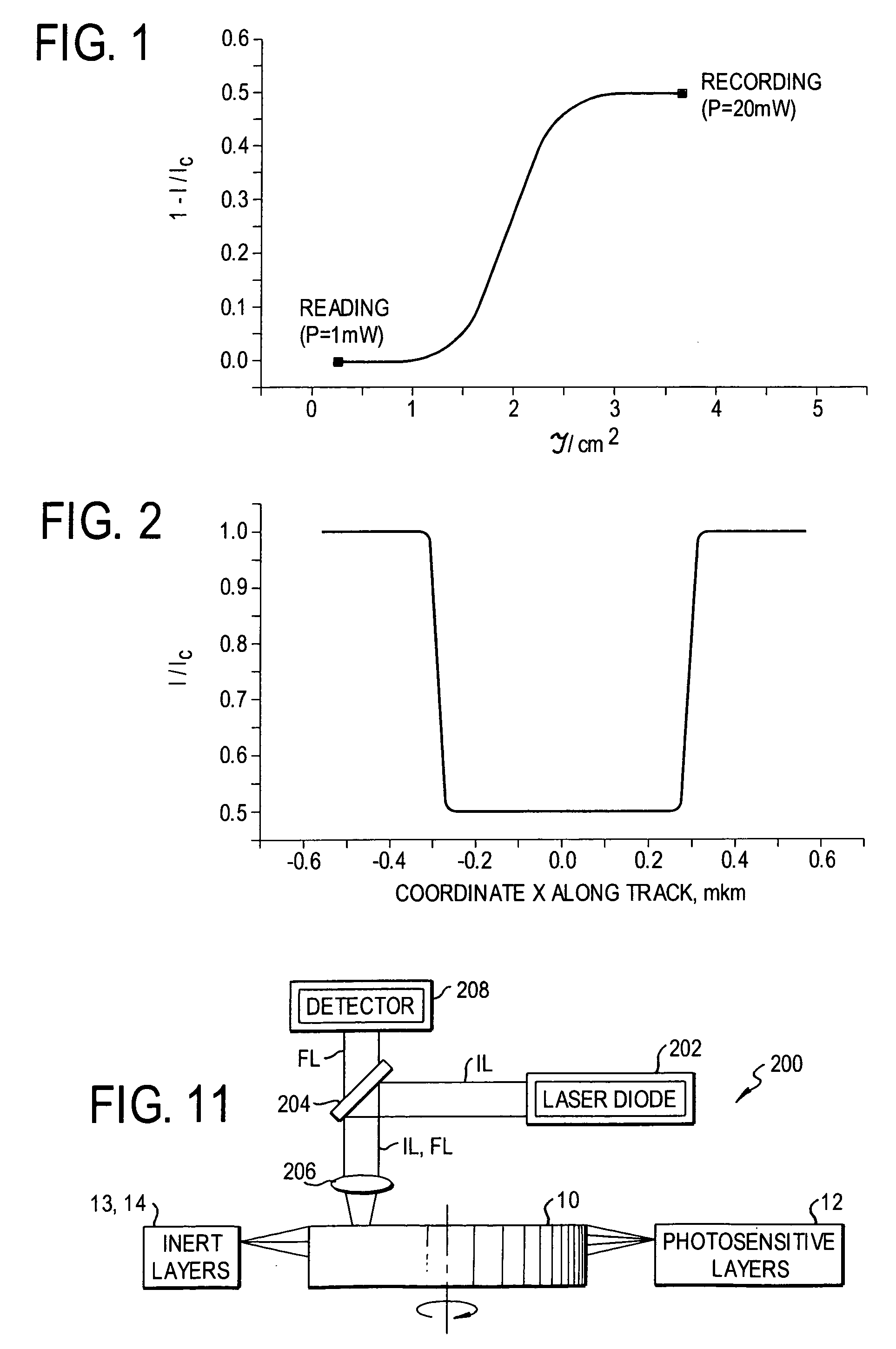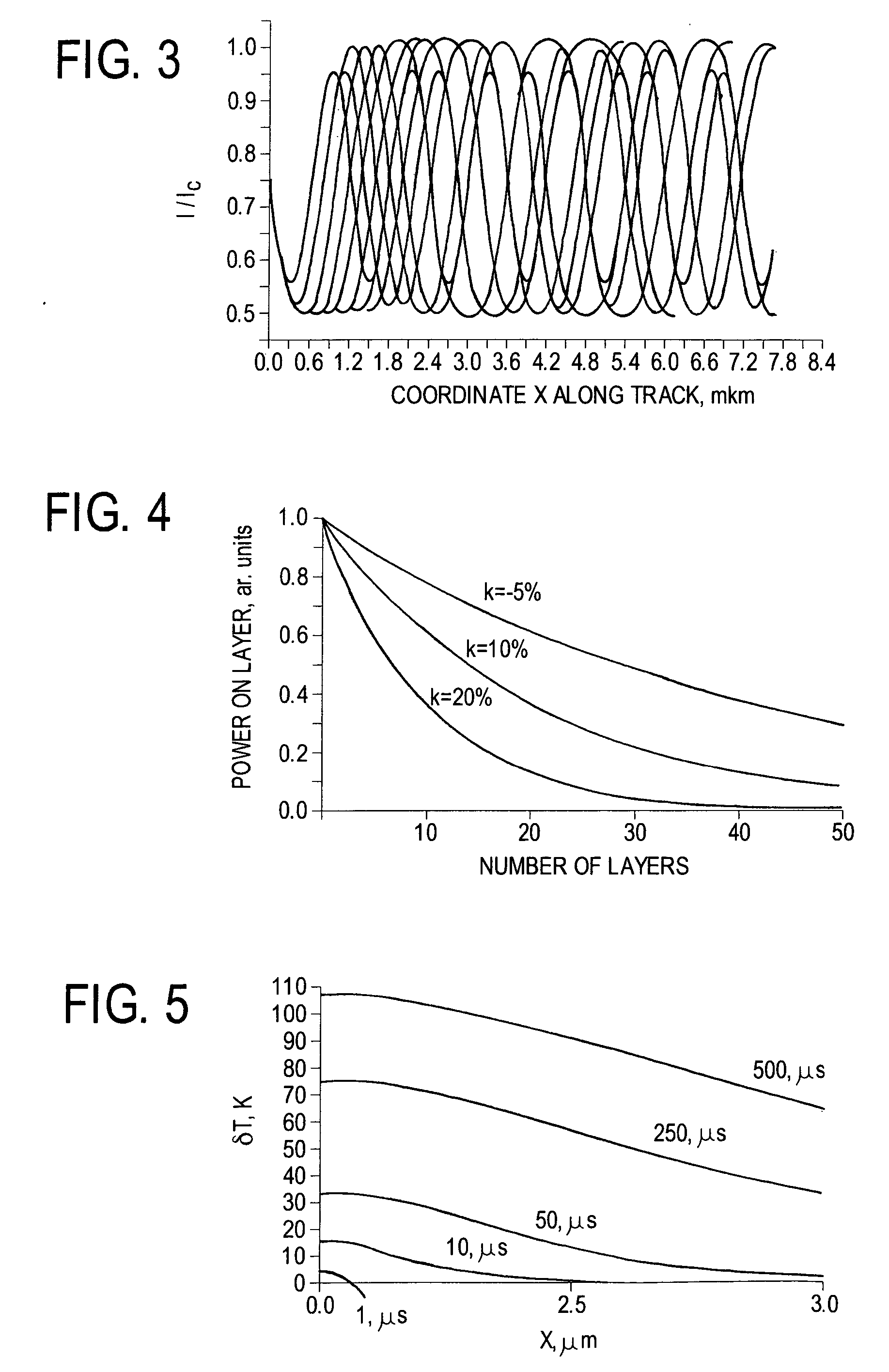Multilayer fluorescent optical disc with photosensitive fluorescent material
a fluorescent material and fluorescent optical disc technology, applied in the field of multi-layer information storage mediums, can solve the problems of imposing specific limitations and requirements on the construction and features of recording media, hardly estimated diffraction and interference distortion of both beams, and uncontrollable weakening of recording radiation intensity, etc., and achieve the effect of less laser radiation intensity
- Summary
- Abstract
- Description
- Claims
- Application Information
AI Technical Summary
Benefits of technology
Problems solved by technology
Method used
Image
Examples
example 1
[0114] The information layer consists of fluorescent substance, i.e. styryle 9M (2-(6-(4-dimethylaminophenyl)-2,4-neopentylene-1,3,5-hexatrienyl)-3 -methyl-benzotriazolium Perchlorate), light-absorbing substance, i.e. malachite green, and power-consuming, power-amplifying (explosive) substance, like 5-aminotetrazolum in polyvinylbutirate. Such system offers recording time below 0.5 μs at laser radiation power on the disc 7 mW. At that the recorded spot is not less than 0.8 μm at contrast over 30% with the beam spot of 1.2 μm.
example 2
[0115] The information layer consists of light-absorbing sub-layer from polystyrene with malachite green, coated with polymer film from polyvinylbutiral with fluorescent probe—styryle 9M and power-consuming substance—tetrazolophenylthiazolum.
[0116] Example 3. Polymer composition for the information layer consists of the power-consuming product, obtained by analog to polymerization transformation of high-molecular compound and power-consuming substance with reactive group. Product of condensation of styrene co-polymer and maleinic anhydride (sthyromate) with 5-aminotetrazolium, fluorescent substance—styryl 9M and light-absorbing substance—malachite green.
example 4
[0117] Polymer composition for the information layer consists of the power-consuming product, obtained by analog to polymerization transformation of high-molecular compound and power-consuming substance with reactive group. Polymer product of polyvinylbutiralfurfurene and N-tetrazolylmaleimide, fluorescent substance—rhodamine 800 and light-absorbing substance—malachite green.
PUM
 Login to View More
Login to View More Abstract
Description
Claims
Application Information
 Login to View More
Login to View More - R&D
- Intellectual Property
- Life Sciences
- Materials
- Tech Scout
- Unparalleled Data Quality
- Higher Quality Content
- 60% Fewer Hallucinations
Browse by: Latest US Patents, China's latest patents, Technical Efficacy Thesaurus, Application Domain, Technology Topic, Popular Technical Reports.
© 2025 PatSnap. All rights reserved.Legal|Privacy policy|Modern Slavery Act Transparency Statement|Sitemap|About US| Contact US: help@patsnap.com



